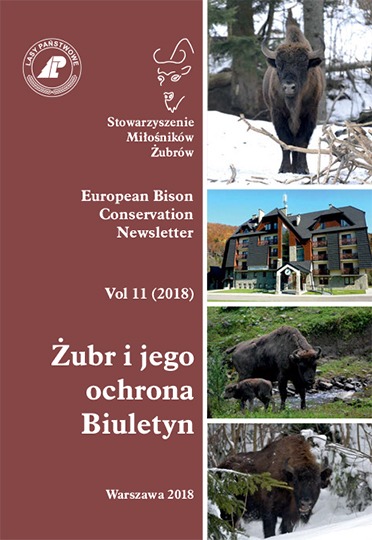The importance of the Eurasian wild boar (Sus scrofa) as a reservoir of tuberculosis for free-living animals including European bison
Keywords:
wild boar, European bison, the Bieszczady Mountains, tuberculosis transmisionAbstract
Cases of TB were recorded in European bison in the Bieszczady Mountains in 1997 – 2013. An alarming phenomenon, however, is a TB case in a wild boar from the Bieszczady. Transmission of TB between infected wild boars and European bison is potentially possible. The article is aimed at presenting the problem of the occurrence of TB in wild boar and the potential danger posed to European bison by this situation. The role of wild boar in TB transmission is not always clear (maintenance, spillover or dead-end host), and depends on various environmental conditions (e.g. population density, occurrence of tuberculosis in other species in the area, feeding, climate). The majority of cases of TB in Europe in wild boars have been reported in Mediterranean Iberia (Spain and Portugal).
Downloads
Published
How to Cite
License
Copyright (c) 2018 Blanka Orłowska, Monika Krajewska-Wędzina, Anna Didkowska, Krzysztof Anusz

This work is licensed under a Creative Commons Attribution 4.0 International License.





